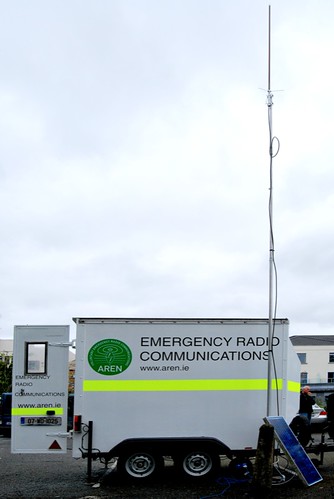Ok I admit, I’m a bit of a solar power junkie. I’ve been experimenting with PV panels a while now (here, here, here, and here). I have a small 10 watt waterproof solar panel (the irony eh?) which I got a number of years ago that I use to keep a few GEL Cells topped up by leaving it in the window of the upstairs bedroom. I have a pair of Evergreen ES-180RLs (24volt) which have been mounted on the shed roof for quite a while now, also, last year I picked up a pair of 80 Watt Panels (12 volts, off ebay) and a second hand 60 (12 volt) watt panel.
At the moment I’m using them to keep a battery bank charged. I have a 1500 Watt inverter/charger that I can run off the bank. I split one of the circuits in the house so that I can plug it either into the consumer board, or the output from the inverter. This circuit has on it, the central heating pump and burner, fridge, fridge freezer and one double socket in the kitchen, i.e. an extension lead can be run to the TV/Radio Shack. This is just the way the house was wired, so I took advantage of it. I also have an external 220v connection that I can feed in the output of a generator. The inverter is plugged into this, and if it is receiving power from a generator, it can power the house circuit mentioned above and re-charge the battery bank simultaneously. My only issue with the inverter is that when the charging circuit is running, it generates an awful racket on the HF bands. I’ve used it a few times during power outages, Watching T.V. when the rest of the housing estate is in darkness is interesting, and generates interesting questions afterwards (how come you had lights on etc.). I also can run the items in the shack directly from the battery bank, but, to be honest, it’s a bit messy, and not very efficient.
The 60 Watt I bring with me on AREN events, as its useful at keeping the battery in my X-Trail or the Mobile Command Post (MCP) topped up:
The 60 Watt panel works surprisingly well for this purpose. On several (rare) sunny events in the last 12 Months, we didn’t require any generators or external power at all on the day.
Anyway, back to my main point. I happened to visit John Ketch a few months back, and he was particularly happy with the advice he got from Nigel in mysolarshop.co.uk as to panels and other items. As I had been thinking about getting a grid-tie inverter to experiment with, I took Nigels details and in February I rang him.
Our initital conversation was not what I expected. I outlined the various bits and pieces that I have, what they were doing etc, and said I was interested in getting a grid-tie inverter. Nigel said to go away and think long and hard about what I’m trying to achieve and come back to him after I’d done that.
So, I go away and re-examined what I wanted to do. Between the server and radio gear I leave running 24×7, plus the usual stuff like alarm clocks etc, I have about approximately a 400 Watts of continuous load in the house. So I decided to do several things. Replace the server with something that uses less power, more intelligently use the radio equipment i.e. only switch it on when a satellite is visible, and see what contribution a grid-tie inverter could make to offsetting the usage.
Typically, I’m tackling the last one first. So my plan was to split the panels, and use the two 24 volt panels with a grid-tie inverter, leave the two 12 volt panels to charge the battery bank. So I rang Nigel again about a week ago. This time things went better, in that I actually convinced Nigel to see me an inverter! I went with a Steca Grid 300 from mysolarshop.co.uk.
Now,before agreeing to the sale Nigel pointed out that though the inverter does automatically shut down should the grid fail, it does not conform to EN50438, which the ESB require in order for any installation to be approved. I looked at the specs, and decided that in the grand scheme of things, my (potential) 300 watts isn’t going to make much of a difference, and that if he didn’t tell the ESB, then neither would I.
This morning at 08:00 when I plugged it in, the inverter was producing approximately 60 Watts, which I think is very impressive given the low light levels. It will peak somewhere between 180 and 200 Watts (based on yesterdays performance) about 13:00, and still be putting out 60 Watts at 20:00. I’m monitoring both the general house consumption and the output of the inverter with an Envi CC128, so it will be interesting to watch it over time.
So there you have it, I’ve gone “Gorilla”. Many thanks to Nigel in mysolarshop.go.uk for the advice and assistance.



